#electric rotary motor
Text
multi component power tool housing mold
China 2k mold maker, offer 2 shot electric tool shell mold, 2 component motor operated tools, two tone power tool enclosure mold, 2 color drill handle housing
#two color electric tool shell mold#2k motor operated tools mold#rotary mold power tool enclosures#double drill handle housing mold#china mold#2 component mold#bi material mold#multi shot mold
0 notes
Text

#indiasbesthiwinballscrewdealers#bestoffersindia#Qualityhiwinballscrew#trustedsellerhiwinballscrew#hiwinballscrewbestoffersindia#hiwinballscrewontimeservice#RoadSafetyFirst
#hiwinballscrewspecialoffers#savewater#planttreessavelife#DrugfreeNation#SaveEnergy#hiwinballscrewdealers#hiwinballscrewmanufacturer#Industrialhiwinballscrewdealers
#Industrialhiwinballscrewmanufacturer#industrialhiwinballscrewdistributer
Ball screws are used in aircraft and missiles to move control surfaces, especially for electric fly by wire, and in automobile power steering to translate rotary motion from an electric motor to axial motion of the steering rack. They are also used in machine tools, robots, and precision assembly equipment.
Ball Screw is a high-efficiency method of converting rotary motion to linear motion by using a recirculating ball mechanism between the screw shaft and the nut. Compared with a conventional sliding screw, the ball screw requires driving torque of one-third or less, making it ideal for saving drive motor power.
Ball screws are more efficient, requiring less torque. Ball screws have lower friction and run at cooler temperatures. Ball screws require grease or oil lubrication to achieve design life. Ball screws need to be replaced less frequently.
Ball screws excel in applications where efficiency, precision and high-speed, smooth motion are preferred. Lead screws can be a suitable solution for simple applications where smooth or quiet motion is of more value than rigidity, precision, accuracy, and speed
Ball screws are rolled out of alloy steel or stainless-steel grades that can be hardened by heat treating. The hardened ball screw material must hold up to the hardened balls loaded in the ball screw nut.
Ball screws date all the way back to the late 19th century, when an engineer placed ball bearings inside the nut threads to reduce friction. For centuries, the conventional lead screw (threaded shaft and nut) was the primary mechanism for converting rotary motion to linear motion.
Ball screws have more complex structures and components and appear to be bulkier than other types of screws. They are more expensive than other screw types, but their benefits and capability outweigh their cost.
#indiasbesthiwinballscrewdealers#bestoffersindia#Qualityhiwinballscrew#trustedsellerhiwinballscrew#hiwinballscrewbestoffersindia#hiwinballscrewontimeservice#RoadSafetyFirst#hiwinballscrewspecialoffers#savewater#planttreessavelife#DrugfreeNation#SaveEnergy#hiwinballscrewdealers#hiwinballscrewmanufacturer#Industrialhiwinballscrewdealers#Industrialhiwinballscrewmanufacturer#industrialhiwinballscrewdistributer#Ball screws are used in aircraft and missiles to move control surfaces#especially for electric fly by wire#and in automobile power steering to translate rotary motion from an electric motor to axial motion of the steering rack. They are also used#robots#and precision assembly equipment.#Ball Screw is a high-efficiency method of converting rotary motion to linear motion by using a recirculating ball mechanism between the scr#the ball screw requires driving torque of one-third or less#making it ideal for saving drive motor power.#Ball screws are more efficient#requiring less torque. Ball screws have lower friction and run at cooler temperatures. Ball screws require grease or oil lubrication to ach#Ball screws excel in applications where efficiency#precision and high-speed#smooth motion are preferred. Lead screws can be a suitable solution for simple applications where smooth or quiet motion is of more value t
1 note
·
View note
Text
Retrofit and Controller/VFD Up-Gradation
Machine retrofits are possible in various levels. A retrofit can be as basic as replacing old axes motors and drives with new AC digital servo technology.
A comprehensive retrofit for example would include an all new machine electrical system such as CNC control, AC digital servo motors and drives, complete machine wiring, linear and rotary encoders for closed loop positioning feedback, new operator pendent, and new electrical cabinet. Machine operation Training and Manufacturers Warranty are also provided.
#Machine retrofits are possible in various levels. A retrofit can be as basic as replacing old axes motors and drives with new AC digital ser#A comprehensive retrofit for example would include an all new machine electrical system such as CNC control#AC digital servo motors and drives#complete machine wiring#linear and rotary encoders for closed loop positioning feedback#new operator pendent#and new electrical cabinet. Machine operation Training and Manufacturers Warranty are also provided.#palletizing company india
0 notes
Text
“Careful with that! We have to assume everything here is dangerous.”
Lena would have preferred to be anywhere else. The last thing she wanted to occupy her afternoon was dealing with yet another reminder of her brother’s sprawling insanity. Every one of these weapons caches -he probably would have melodramatically called them “hideouts” or “secret bases”- was like a tombstone marking the grave of the only truly sincere, loving relationship she’d ever had in her life.
He hadn’t always been the slavering maniac with an incoherent obsession with killing a superhero. He’d been a protector and a benefactor, a chess opponent and a confidant, the only person in her life who presented an uncomplicated human connection, without any ulterior motives or conditions.
Everyone else wanted something from her. Money. Power. A competitive advantage. Technological secrets. Or just sex. Lena resented that most of all, the gray old men who saw nothing of her achievements or her intellect and regarded her as just another piece of ass with blue enough blood that they had to ask permission rather than simply grope.
Watching her crew load up the equipment in this sweltering heat made her physically ill, and she was glad she’d skipped breakfast. Kara would be upset if she knew.
She’s had to text Kara and let her know that she’d be out of the office and would have to skip their lunch plans. Kara was…
Kara was becoming a complication, because Kara was doing the one thing Lena wished she wouldn’t: She was giving Lena hope. She’d barreled into Lena’s life with an earnest intensity that had been bewildering at first and intriguing afterwards, with her insistence that they be friends, and constant reminders that they were friends, even as her eyes wandered to Lena’s cleavage or she unconsciously bit her lip and stared that smoldering stare just to look away at the last second.
Lena shook her head, clearing her thoughts of yet another Straight Best Friend taking her down that well-worn path of sapphic suffering. She had bigger fish to fry right now.
It was too bad that her relationship with Supergirl had been so chilly lately. It might have been easier to simply tip off the hero and the government agency she worked with and let them handle the clean up.
Lena was deep in reverie when one of the crates, a bulky reinforced one, dropped a good two feet from a forklift and the wood splintered as the locks burst free.
“Idiot!” Lena shouted at the driver. “This equipment is sensitive and potentially dangerous, and…”
“STARTUP SEQUENCE INITIATED.”
A metallic voice ground out of the crate and it shifted as something vast and bulky moved around inside. Lena stumbled back, glad she’d opted for a sensible set of flats for this, and turned to run.
A metallic claw crashed out of the crate, followed by an arm-mounted rotary cannon. The older model Lexosuit, one of the originals that Lex had planned to illegally smuggle out of the country in a fake theft scheme and sell to the Kasnians, stood up in its shaky, clanking way and took a few steps, shaking off planks and nylon straps the way a baby bird might shake off pieces of shell.
There was nowhere to go. The machine scanned the room, moving jerkily as it zeroed in on her.
Lex’s voice, a recording, boomed from its loudspeakers.
“Ah, dear sister, I see you’ve found another of my hidden fastnesses.”
You melodramatic-
“Oh well. I should thank you for setting off the security system. I won’t have to waste my precious time killing you myself. Au revoir, Lena!”
The suit spun its arm cannon and aimed at her. The barrels assembly made a half turn, the electric motor charging up as it cycled the first 32mm mass-reactive exploding shell into the chamber. Lex had once called it a masterpiece in the art of violating the Geneva Conventions. It was about to blow Lena inside out, and the subsequent shots reduce her to a the chunky consistency of a good bolognése.
But then there was a wind that was not a wind, and SHE was there.
Supergirl seized Lena with precision and grace, hands that could crush diamonds pressed just so over Lena’s ears to protect her from the roar of the guns. Lena wasn’t sure who screamed louder, her or Supergirl, as the revolving barrels ripped out their entire supply of ammunition in a few seconds, pummeling Supergirl’s back with explosions that could have shredded a tank, as the hero cradled Lena, sheltering her with her superhuman body.
When the hellstorm was over, the machine charged at them.
Supergirl did scream now, and fell upon the machine in a berserk rage. Lena had seen her in a fight before and knew she could be terrible to behold, but this was different. The empty suit was struck with such unending fury that she reduced it to shreds of metal and oil-spitting chunks of machinery in moments, spreading it halfway across the floor of warehouse.
When Supergirl rounded on her, Lena’s heart skipped. The hero’s chest was heaving, straining at the crest on her chest even as the bunching muscles on her arms and stomach pulled at the material, her perfect hair swirling around as she turned, that angelic face marred by a streak of oil and a sheen of sweat.
How dare she just look like that. It was incredibly unfair.
Before Lena knew it what was happening, Supergirl was lifting her into a heart-skipping bridal carry, pulling her much too close as she took off. On instinct, Lena pressed her eyes shut and buried her face in the Kryptonian’s neck, to hide from the heights.
Moments later they landed, and Supergirl threw Lena’s balcony door back and deposited her on her feet, leaving her stumbling back against her kitchen island in a daze. Supergirl stared at her, looming over Lena with the height difference increased by her stacked heels and Lena having lost her shoes at some point, so her stocking toes were left curling on the cold floor.
“That thing almost killed you,” Supergirl snapped. “If Is been a millisecond later you’d be dead.”
Her voice was tight with emotion, somewhere between anger, exasperation, and terror, and it felt like a fist closed in Lena’s chest.
“Are you sure you just weren’t there to make sure I wasn’t taking Lex’s old suit for a spin myself?” Lena spat, though her voice trembled. “You don’t seem to trust a thing I say lately. If I tell you the sky is blue you’ll go check.”
Supergirl’s face flushed and Lena braced for another booming, self righteous speech about trust or safety or the meaning of teamwork or some such heroic nonsense, but then her voice shattered into a million pieces and tears welled wet in her eyes.
“All I want is for you to be okay.”
A thousand thoughts danced in Lena’s mind. To ask her why, to defy her, to taunt her, to demand what exactly it was that made Lena so damned important that this woman was so intense about her safety one moment and so angry the next.
In the dance of all those thoughts, the more base instinct won out. Lena grabbed Supergirl by the neck of her suit, just below those delightful collarbones of hers, and used it as a handle to pull herself into a hard, aggressive kiss.
The world hung still for a moment, and Lena felt it all pivot around her. Something big was happening here. Something huge, something…
Something forgotten entirely as Supergirl’s tongue roughly claimed Lena’s mouth and her hands raked over Lena’s ass, dragging her skirt up.
Oh God, she thought, this is actually happening.
Lips pressed to her skin, the words burning hot into her flesh like an invocation.
“Is this okay?” Supergirl whispered.
“Yes,” Lena moaned, without hesitation.
To be continued…
#supercorp#supergirl fanfiction#supergirl#supercorp fanfic#lena luthor#kara danvers#kara x lena#karlena#supergirl fanfic#ficlet#steamy#spicy#adrenaline rushes do wild things#post-rescue lip locking#oh supergirl how can I ever repay you for saving me?
357 notes
·
View notes
Text
Final Moments
I've had this one sitting in docs for a good half year. The aftermath of the Spamton Neo boss fight has always interested me and I decided to expand on that.
---
He had given it all he possibly had.
Snap, pop.
So had they.
His joints wracked with exhaustion, his porcelain skin scuffed with two decades of desperation. The puppet raised his tired eyes up to his lenses, they were clouded and foggy with prints and things lost to memory. It was with a solemn sort of defeat he acknowledged the ivy wire around his body, his wrists, his willpower.
*Footsteps struck the ground in the distant darkness.
What was once the phantom sound of a rotary phone, was now the ticking clock on an old friend’s wristwatch. He was being held ruthlessly in the hand of something fated. It smelled of dust and cobwebs, of murk and… muck. It felt hollow and dark, very dark, it has always been his only companion. Oh, how he craved company.
*There was a soft murmur of armor clinking.
His life rolled like an old film in his mind, for he had done everything he possibly could, but he was, and always would be, thrown away. He tried to deal himself another hand of cards, to barter with his sixth sense, and to argue with his aching gears and circuits. One more time, get up again. It’s all about luck, it’s all about hard work, life is a ladder you climb, he used to muse. There’s nowhere I must go but up.
*The breeze whistled something like sympathy.
The motor in his mechanical heart thumped, shook, and whirred. He smelled of burning electrical, of rust and rotted glass. He was a machine with no checklight, a walking technical malfunction, that no one bothered to help repair. Tell me, how is a broken machine to fix itself?
*The basement walls closed their eyes, and looked away.
The man reared his tired head with an ugly pop, and stared at nothing in particular. No, indeed, he needn't get back up on his feet again, if even he could. For he knew somewhere deep in his wretched gut, that if there wasn’t him to throw away, then there was no one. To try and be big when you are fated to be small, is to watch in hopeless agony as you are hammered down time and time again. He would always be Spamton G. Spamton, the email guy.
It is your fate.
A gentle smile crept onto his face, because oh but, maybe, someone valued him. Maybe, just maybe, in his last moments, he could impart what little about him was useful onto the Lightners. The only people who'd shown him kindness, with no strings attached. He inhaled a shaky breath, and looked on as his only friends walked toward him.
“It seems after all I couldn’t be more than a simple puppet.”
His voice was dry and hoarse, but soft, bracketless. There was no salesman left.
“But you three, you’re strong.”
The smell of burning wires could make a stomach ache.
“With a power like that… Maybe you three can break your own strings.”
His jaw clacked lifelessly with each syllable. The end was nearer, nearer, yet nearer.
But even still.
“Let me be your strength.”
#spamton#deltarune#deltarune chapter 2#spamton g spamton#utdr#writing#is this a fic#fic#angst#walt vault#this drabble is meant to double as poetry in a way i was kinda having some poetic fun#spamton fic#i do a drabble sometimes as a treat#important to keep in mind I don’t write often#runs away
18 notes
·
View notes
Text






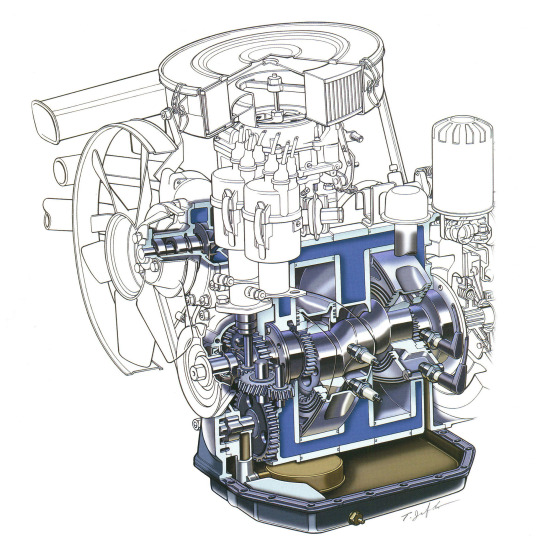
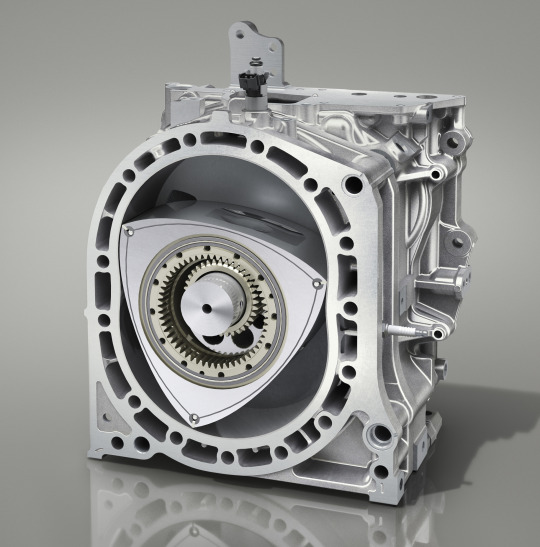


What a difference 60 years makes juxtaposition of Mazda 802 Prototype, 1963 & Mazda MX-30 e-Skyactiv R-EV "Edition R," 2023. Mazda have relaunched the rotary engine in a new version of the MX-30 electric crossover that uses a single rotor Wankel engine as a range-extender. There is no mechanical connection between the engine and the driving wheels, the rotary unit simply acts as a generator while the car's 170PS electric motor powers it. The rotary engine provides the MX-30 with a range of 650km. The Edition R is a special edition of 400 cars to celebrate the return of the rotary motor. The 802 was presented at the 10th Tokyo Motor show and was a prototype for Mazda's first rotary engined production, the Cosmo of 1967.
#Mazda#Mazda Rotary#Mazda 802#Mazda MX-30#range extender#EV#electric car#prototype#What a difference#rotary engine#1963#2023#Mazda MX-30 Edition R#special edition#limited edition
164 notes
·
View notes
Text
15 Inventors Who Were Killed By Their Own Inventions
Marie Curie - Marie Curie, popularly known as Madame Curie, invented the process to isolate radium after co-discovering the radioactive elements radium and polonium. She died of aplastic anemia as a result of prolonged exposure to ionizing radiation emanating from her research materials. The dangers of radiation were not well understood at the time.
William Nelson - a General Electric employee, invented a new way to motorize bicycles. He then fell off his prototype bike during a test run and died.
William Bullock - he invented the web rotary printing press. Several years after its invention, his foot was crushed during the installation of the new machine in Philadelphia. The crushed foot developed gangrene and Bullock died during the amputation.
Horace Lawson Hunley - he was a marine engineer and was the inventor of the first war submarine. During a routine test, Hunley, along with a 7-member crew, sunk to death in a previously damaged submarine H. L. Hunley (named after Hunley’s death) on October 15, 1963.
Francis Edgar Stanley - Francis crashed into a woodpile while driving a Stanley Steamer. It was a steam engine-based car developed by Stanley Motor Carriage Company, founded by Francis E. Stanley and his twin Freelan O. Stanley.
Thomas Andrews - he was an Irish businessman and shipbuilder. As the naval architect in charge of the plans for the ocean liner RMS Titanic, he was travelling on board that vessel during her maiden voyage when the ship hit an iceberg on 14 April 1912. He perished along with more than 1,500 others. His body was never recovered.
Thomas Midgley Jr. - he was an American engineer and chemist who contracted polio at age 51, leaving him severely disabled. He devised an elaborate system of ropes and pulleys to help others lift him from the bed. He was accidentally entangled in the ropes of the device and died of strangulation at the age of 55.
Alexander Bogdanov - he was a Russian physician and philosopher who was one of the first people to experiment with blood transfusion. He died when he used the blood of malaria and TB victim on himself.
Michael Dacre - died after testing his flying taxi device designed to permit fast, affordable travel between regional cities.
Max Valier - invented liquid-fuelled rocket engines as a member of the 1920s German rocket society. On May 17, 1930, an alcohol-fuelled engine exploded on his test bench in Berlin that killed him instantly.
Mike Hughes - was killed when the parachute failed to deploy during a crash landing while piloting his homemade steam-powered rocket.
Harry K. Daghlian Jr. and Louis Slotin - The two physicists were running experiments on plutonium for The Manhattan Project, and both died due to lethal doses of radiation a year apart (1945 and 1946, respectively).
Karel Soucek - The professional stuntman developed a shock-absorbent barrel in which he would go over the Niagara Falls. He did so successfully, but when performing a similar stunt in the Astrodome, the barrel was released too early and Soucek plummeted 180 feet, hitting the rim of the water tank designed to cushion the blow.
Hammad al-Jawhari - he was a prominent scholar in early 11th century Iraq and he was also sort of an inventor, who was particularly obsessed with flight. He strapped on a pair of wooden wings with feathers stuck on them and tried to impress the local Imam. He jumped off from the roof of a mosque and consequently died.
Jean-Francoise Pilatre de Rozier - Rozier was a French teacher who taught chemistry and physics. He was also a pioneer of aviation, having made the first manned free balloon flight in 1783. He died when his balloon crashed near Wimereux in the Pas-de-Calais during an attempt to fly across the English Channel. Pilâtre de Rozier was the first known fatalities in an air crash when his Roziere balloon crashed on June 15, 1785.
48 notes
·
View notes
Photo




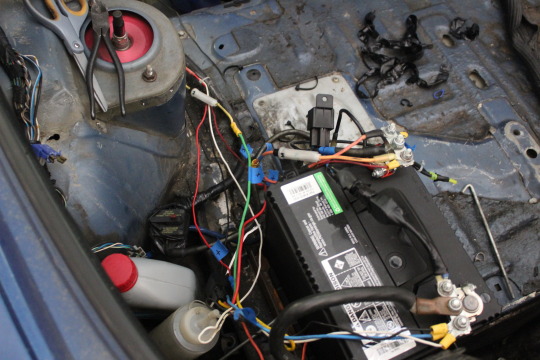

Story time:
This particular car has come full circle..1988 NA FC RX7 with an unknown history & a spirit that won’t be snuffed out. I met my buddy on our first touge drive with his other friend, both randoms I met at a gas station the night before. First corner on the local run and the man in back understeers straight off into a tree killing the 91′ miata.. Due to life circumstances he had to sell the car which was in bad shape and, he sold it to his friend (other driver). Me and the friend became close, I helped him rebuild the wrecked miata into a drift missile. New gas tank, subframes, welded diff, suspension, a arms ect. Due to my life circumstances then, I had to move and never got to see the car drive. We stayed friends, and I got to see videos of it driving and drifting. An awesome feeling to see the car I helped put together getting use and enjoyment! Time goes by and the friend ends up trading that missile miata for this 1988 RX7. 187,000 chassis miles. Original NA car, with a turbo ii drivetrain swap running on one rotor, and paint/interior trashed. Car was an wreck..A great financial choice for a college student. So naturally he goes full budget or f-ck it build. Rebuilds the motor, “wires” it together, and has a turbo 13b car. Car is broken and rebuilt throughout the learning process of driving. Car goes to North Carolina, does drift events, touge, street duty. Years down the line buddy moves to where I am. I have the opportunity to drive the car, drift it, work on it, tune, help out with whatever. Felt like a team car. Took it to events, meets, touge. Naturally, life situations, I move again and don’t see the car for 2 years. It gets beat, broken, but not rebuilt. Time goes on, she sits. But cannot be laid to rest. Life situations, blessings, I get the opportunity the own the car. I drive 1200 miles to pick up the rx7. It looked like a barn find when I put it on the trailer, covered in dust. I get it home and assess the issues, fix a few so I can move it about. Rip it around a few times but on one drive it developed a major electrical issue. Car sits for a year due to life situations. I got to work on it for the first time in a while and plan to regularly whenever possible! I want my friend’s dream and spirit to live on in this car because he was so inspired to piece this thing together. And the way it all came together and the friends who have helped keep it going along the way. And I know he will drive it again and probably even own it one day.. The motor rebuild was pieced with used parts from local rx7 guys. With FD rx7 irons, FD rotors, s5 turbo, s4 rx7 other bits. Along the knowledge passed down by other rotary enthusiasts. A true frankenstein build. This car just has to live and be driven. This car has to scream again!
This is how its sitting currently... car was repainted and looked great a few years ago, but now.. its trash
Also I dug into the whole wiring mess, isolated every wire (harness was heavily modified) and properly insulated it all, routed nicely ect. Fixed a ton of connections and bad crimps, bad grounds, redid a lot of the harness. Found wires rubbing through on metal causing shorts, AFR 12v source intermittent connection, battery cable from trunk to starter was about to rub through and cause a fire! Haven’t taken pics as its been a few weeks since ive been into the shop.. but all that effort I did fixed the major wiring issue and I knew the instant it started up, smooth idle. Took it for a few drives and just fell in love again. The feel, sound, experience of this 80′s chassis with a 250 HP turbo rotary is just something unique and really special. This car is a few steps closer to being track worthy!
-I want to delete the swirl pot setup that I don’t trust is routed correctly. And the extra port is capped with a zip tie. Which already blew off once. Rather delete this setup and eliminate extra leak points.
-Car has mismatched coilovers with too stiff of springs rates
-Car has nice cusco LSD rear end but need adjustable camber and toe bits + alignment
-Need extra 5 lug wheels for drift spares
-Few minor leaks need to be addressed
-I do have bumpers for it, but cosmetics are not priority
-Need to rebuild front wheel bearings
-Car has Inline hydro e-brake which I am not a fan of. Going to remove it and do a dual caliper setup to retain brake feel
-Exhaust leak under the car fills cabin with premix smell
-Passenger bucket seat/harness
*down the line*
-BNR rebuild turbo w/ billet compressor wheel and porting
-New intercooler setup, greddy throttle body inlet, exhaust (it was made quiet for cali..no emissions where the car is now) and retune on new ECU. It’s on an old old 2000s version of adaptronics.
The motor runs great on the current setup. So I want to keep it simple for now, and just spend more time in the cockpit after I go through and make it a bit more reliable. Dreams, time, money 💖
#clubt#rx7#dreams#90s#80s#fcrx7#fc#turbo#rotary#cars#automotive#spirit#ghost in the machine#passion#mazda#initiald#touge#dream#journal#jdm#lifestyle#import tuner#90sforever#motivation
21 notes
·
View notes
Text
15 Inventors Who Were Killed By Their Own Inventions
Marie Curie - Marie Curie, popularly known as Madame Curie, invented the process to isolate radium after co-discovering the radioactive elements radium and polonium. She died of aplastic anemia as a result of prolonged exposure to ionizing radiation emanating from her research materials. The dangers of radiation were not well understood at the time.
William Nelson - a General Electric employee, invented a new way to motorize bicycles. He then fell off his prototype bike during a test run and died.
William Bullock - he invented the web rotary printing press. Several years after its invention, his foot was crushed during the installation of the new machine in Philadelphia. The crushed foot developed gangrene and Bullock died during the amputation.
Horace Lawson Hunley - he was a marine engineer and was the inventor of the first war submarine. During a routine test, Hunley, along with a 7-member crew, sunk to death in a previously damaged submarine H. L. Hunley (named after Hunley’s death) on October 15, 1963.
Francis Edgar Stanley - Francis crashed into a woodpile while driving a Stanley Steamer. It was a steam engine-based car developed by Stanley Motor Carriage Company, founded by Francis E. Stanley and his twin Freelan O. Stanley.
Thomas Andrews - he was an Irish businessman and shipbuilder. As the naval architect in charge of the plans for the ocean liner RMS Titanic, he was travelling on board that vessel during her maiden voyage when the ship hit an iceberg on 14 April 1912. He perished along with more than 1,500 others. His body was never recovered.
Thomas Midgley Jr. - he was an American engineer and chemist who contracted polio at age 51, leaving him severely disabled. He devised an elaborate system of ropes and pulleys to help others lift him from the bed. He was accidentally entangled in the ropes of the device and died of strangulation at the age of 55.
Alexander Bogdanov - he was a Russian physician and philosopher who was one of the first people to experiment with blood transfusion. He died when he used the blood of malaria and TB victim on himself.
Michael Dacre - died after testing his flying taxi device designed to permit fast, affordable travel between regional cities.
Max Valier - invented liquid-fuelled rocket engines as a member of the 1920s German rocket society. On May 17, 1930, an alcohol-fuelled engine exploded on his test bench in Berlin that killed him instantly.
Mike Hughes - was killed when the parachute failed to deploy during a crash landing while piloting his homemade steam-powered rocket.
Harry K. Daghlian Jr. and Louis Slotin - The two physicists were running experiments on plutonium for The Manhattan Project, and both died due to lethal doses of radiation a year apart (1945 and 1946, respectively).
Karel Soucek - The professional stuntman developed a shock-absorbent barrel in which he would go over the Niagara Falls. He did so successfully, but when performing a similar stunt in the Astrodome, the barrel was released too early and Soucek plummeted 180 feet, hitting the rim of the water tank designed to cushion the blow.
Hammad al-Jawhari - he was a prominent scholar in early 11th century Iraq and he was also sort of an inventor, who was particularly obsessed with flight. He strapped on a pair of wooden wings with feathers stuck on them and tried to impress the local Imam. He jumped off from the roof of a mosque and consequently died.
Jean-Francoise Pilatre de Rozier - Rozier was a French teacher who taught chemistry and physics. He was also a pioneer of aviation, having made the first manned free balloon flight in 1783. He died when his balloon crashed near Wimereux in the Pas-de-Calais during an attempt to fly across the English Channel. Pilâtre de Rozier was the first known fatalities in an air crash when his Roziere balloon crashed on June 15, 1785.
15 notes
·
View notes
Text

Outside the box: the rotary motor of Walter Macomber
When there’s talk about rotary engines these days, it's usually about Wankel engines, which were designed by Felix Wankel and have been seen in production cars from 1964 onwards. As a matter of fact, keen Wankel engine proponents Mazda Motors (the only manufacturer still using them?) announced a rotary-engined hybrid electric car earlier this year. However, the rotary engine mentioned on the side of the big car seen here is of a very different kind. Walter Macomber and his Macomber Rotary Engine Company in Los Angeles created an axial engine as early as in 1909. This was an air-cooled engine with seven cylinders, built on an axial scheme with a single rotating cylinder block. Yes, the block with all its seven cylinders was rotating...
Read more at PreWarCar: https://www.prewarcar.com/outside-the-box-the-rotary-motor-of-walter-macomber
4 notes
·
View notes
Text
Electrical Genius: C. P. Steinmetz
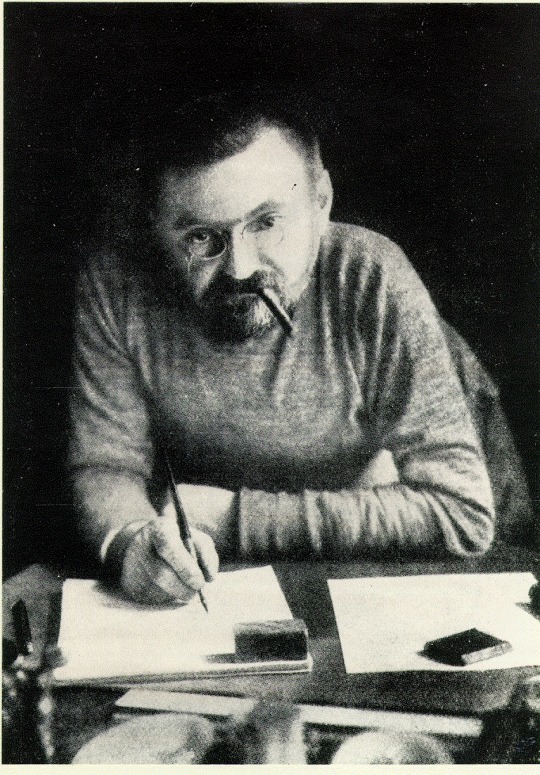
Charles Proteus Steinmetz was a German-American mathematician and electrical engineer. He was a very short man with a hunchback, but that didn't prevent him from becoming one of the more significant contributors to the knowledge of electricity. Steinmetz's mathematical work with regard to alternating currents helped revolutionize the electric power industry in the United States with his ground-breaking discoveries in the understanding of hysteresis (a lag between input and output in a system upon a change in direction). This discovery enabled engineers to design far better AC systems for use in commercial applications.
Steinmetz moved to the U.S. in 1889 after fleeing imprisonment in Germany for his socialistic political views. He immediately became acquainted with engineers such as Elihu Thomson, Mihajlo Pupin and Thomas Edison (all rivals of Nikola Tesla and the Westinghouse Co.). Although Steinmetz was new to the political differences in the commercial development of power distribution (AC vs. DC), it wouldn't take long before his new friends pressured him into joining their side against the opposition.
But before he teamed up with Thomson-Houston Electric (which later merged with Edison Electric to form General Electric), Steinmetz pointed out certain flaws in their understanding of polyphase AC generators. During a meeting of the American Institute of Electrical Engineers (Dec.16, 1891), a paper written by Pupin on polyphase AC generators was discussed. One of Pupin's arguments was that Ferraris and Dolivio-Dobrowolosky created the first polyphase motors. This was key to GE engineers because this allowed them to combat Westinghouse and Tesla's AC patents. Steinmetz, in turn, was quick to call out the mistakes. In the discussion, Steinmetz says:
"Ferraris built only a little toy, and his magnetic circuits, so far as I know, were completed in air, not in iron…
"This three-phase current system has been brought up the last time as something entirely new. I cannot agree with that in the least. For already in the old Tesla motor the three phases of current, only that in the three wires that go out from the central station the three currents have not a difference of phase of exactly 120 degrees, but two have a difference of 90 degrees, and either one of these two currents has with the third a difference of phase of 135 degrees. But if now the "Allgemeine Electricitats Gesellschaft" transmits currents of less than 120 degrees difference of phase-well, then the Dobrowolsky system comes back exactly to the old three-wire system of Tesla, only that the motor is certainly built somewhat differently. But that does not matter. Mechanically, the motor is undoubtedly improved, for there are several years' time between the old Tesla three wire motor and the new German three phaser. Whether the latter shows any improvements in its principles, is a question which is anything but beyond doubt.
"But in the new Dolivo von Dobrowolsky system of electric distribution, I really cannot see anything new but the mechanical construction of motors and generators. That it became so famous is, I think, entirely due to the success of the grand transmission of power over such an enormous distance as 116 miles, which cast a halo around everything that was used with this transmission, and so made the rotary motor famous; but, in reality, I think ordinary synchronous motors might just as well have been used, and would have worked just as successfully, so that the choice of the particular motor had nothing to do with the success of the power transmission."
Unfortunately for Steinmetz, these refutations would later come back to haunt him. Tesla's patents would gain priority over Ferraris and Dolivio-Dobrowolosky. Thomson would succumb to hiring a janitor to steal AC blueprints from the Westinghouse Co. so his company could bypass Tesla’s patents and build their own AC system. Pupin continued to discredit Tesla as the true inventor of the polypase motor in lectures and in his Pulitzer Prize winning autobiography—even though the inventors he gave credit to admitted they got their idea from Tesla. Steinmetz helped Thomson and GE bypass Tesla’s patents, and later intentionally omitted any reference to Tesla in his famous writings on AC phenomena. Each of the afore-mentioned engineers made a name for themselves, and their deplor of Tesla has unquestionably contributed to Tesla being excluded from history and science books of today.
#Charles Proteus Steinmetz#Steinmetz#history#electricity#alternating current#AC#quotes#invention#Nikola Tesla#facts#ahead of his time#ahead of our time
31 notes
·
View notes
Text
Best Cricut Machines You Should Buy in 2023?

Do you want to buy the Cricut cutting machine, or are you still deciding which one to buy? Don't worry; you are not alone - many people share this question: "What is the best Cricut machine?" This blog post is here to provide the answer to your question.
Today, many options are available when it comes to Cricut cutting machines. Crafters and DIY enthusiasts enjoy making their designs using these machines. It allows them to complete their task 10 times faster than the traditional methods. Crafters prefer the Cricut machine as it provides professional cutting and finishing. Therefore, we have created this blog to give you an overview of various Cricut machines. Also, we'll delve into the pros and cons of various types of cutting machines.
What is a Cricut and What Does it Do?
A Cricut is a famous brand that makes cutting machines to cut and draw on materials like paper, vinyl, and cardstock. Some of them can also cut tough materials, such as leather, fabric, wood, board, etc. You can simply consider a Cricut device like a printer. However, it doesn't print anything but can cut designs onto desirable materials using a movable blade.
In terms of quality, we must say the best Cricut machine must be capable of cutting anything precisely. Hence, this is the perfect choice for making personalized crafts, including T-shirts, custom wall art, and party decor.
Different Types of Cricut Cutting Machines
Currently, there are five different Cricut cutting machines: Explore Air 2, Explore 3, Maker, Maker 3, and Cricut Joy. All of them are electric craft machines and quite similar in terms of features. However, each machine comes with a unique feature, making it perfect for different purposes.
The Cricut Explore is the mid-level option and is still considered the best Cricut machine. Whereas the Cricut Maker 3 is the upgraded version of the Explore series and has the ability to cut a range of materials with different types of tools. In comparison, the Joy machine is the smallest model. Due to this, Joy is portable and easy to set up and use. Further, in June 2021, Cricut launched the two latest machines in their lineup: Cricut Explore 3 and Maker 3.
Regarding Cricut Maker 3, it is the best-selling machine in the maker series and has ten times the cutting force. Moreover, crafters consider Maker 3 as the best Cricut machine.
1. Cricut Explore Series
Now, let us have a look at the overview of exploring a series of machines. The Explore machine is the best Cricut machine for you if you want to cut materials such as vinyl, iron-on crafts, and greeting cards
Cricut Explore Air 2
The Explore Air 2 is one of the best-selling machines, and its size is perfect for both novice and professional crafters. The machine uses cutting mats, having sizes of 12" x 12" or 12" x 24". The cutting mat size is perfect for creating iron-on decals for T-shirts, 3D projects, and large vinyl decals. All these features make Cricut Explore Air 2 the best Cricut machine for 2023.
Moreover, the Cricut Explore Air 2 has a Fine-Point blade. It can cut over 100 materials, like vinyl, paper, and cardstock. In addition to this, you can cut even more materials by swapping out the Fine Point Blade for the Bonded Fabric Blade and the Deep Point Blade.
Pros:
It can cut, foil, score, and write
Works with 100+ different materials
Bluetooth available
Print then Cut feature
Free Cricut app
Cons:
Not suitable for Adaptive system, meaning you can’t use Rotary and Knife Blades, as well as Scoring Wheels
A Cricut mat is needed
Not work with Cricut Smart Materials like Vinyl
The maximum cutting length (23″ on a 24″ mat)
It is not portable
Cricut Explore 3
The Cricut Explore 3 was introduced in June 2021 in the Explore series. Due to its powerful motor, it can cut 2x faster. Plus, it is designed for cutting Smart Materials without a mat.
It is a full-size machine that can cut 100 materials such as cardstock, glitter paper, iron-on-vinyl, and vinyl. Also, it works with 6 tools: the Fine Point Blade, Scoring Stylus, Foil Transfer, and the Deep Point Blade, enabling you to cut a wide range of materials. It even allows you to cut leather and fabric.
Pros:
It can cut, foil, score, and write
Work with 100+ materials
Bluetooth available
Can cut with 2x speed than its predecessor when using Smart Materials
Print then Cut feature
Free Design Space app
Compatible with cutting without a mat.
Cons:
Not suitable for Adaptive system, meaning you can’t use Rotary Blade, Knife Blade, Scoring Wheels
It is also not portable
2. Cricut Maker Series
These Maker series models are the most powerful cutting devices. They allow you to create any project virtually.
Cricut Maker
The Cricut Maker comes under a commercial-grade machine that can deliver a professional level of quality. This is the most versatile cutting machine in full size. It can cut 300+ materials, such as acrylic, leather, felt, plastic, fabric, wood, and more. Besides cutting and writing, it can do more than this. The versatile feature of the Maker machine is compatible with the Adaptive Tool System, which includes the knife blade, engraving tip, foiling tip, rotary cutter, and debossing tool.
Pros:
It can cut, foil, score, engrave, deboss, write, and more.
It is compatible with 300+ materials
Bluetooth available
Can cut with 10x cutting force
Adaptive Tool System: You can use Rotary Blade, Knife Blade, and Scoring Wheels.
Print then Cut feature
Free Design Space app
Cons:
You will need a cutting mat, and you can’t use it with Smart Materials like Vinyl.
It provides a maximum cutting length of 23″ on a 24″ mat.
It is also not portable.
Cricut Maker 3
This is the upgraded version of the Cricut Maker series, and it was released in June 2021. This is the best machine anyone can have. So, if you are looking for the best Cricut machine with ultimate commercial-grade performance, then you must go for Cricut Maker 3.
This Maker 3 cutting device is compatible with 13 tools for cutting as well as with Smart Materials so that you can cut a long project up to 12 ft without the need for a mat.
Pros :
It can cut, foil, score, engrave, deboss, write, and more.
It is compatible with 300+ materials
Bluetooth available
Can cut with 10x cutting force
Adaptive Tool System, meaning you can use Rotary Blade, Knife Blade, and Scoring Wheels.
Print then Cut feature
Free Cricut software
Cons:
It is the most expensive machine.
Not portable
3. Cricut Joy
The Cricut Joy is the newest model. Its small and compact design makes it portable. Hence, it will occupy less space. Moreover, it can cut 50+ materials, including adhesive vinyl and paper. Plus, you can cut thick faux leather sheets. The maximum width for cutting a design is 4.5". Hence, it's a great mini tool that can make sticker sheets, greeting cards, and other small projects.
Overall, the Cricut Joy is the best Cricut machine for beginners.
Pros:
It can cut and writes
It is compatible with 20+ materials
Bluetooth available
Portable
It can be cut without a mat by using Smart Materials
Cons:
It has a maximum cut width of 4.5.”
It is not compatible with adaptive Tool Systems and the Print then Cut projects.
Conclusion
Cricut releases the best Cricut machine, but it also depends on your usage. You will find five types of Cricut cutting machines that we have already discussed in this blog. Plus, we have shared the pros and cons of using that particular machine. In contrast, you should buy Cricut Joy if you are a beginner. It will be pocket-friendly and won't occupy much space. And, if you only want to make crafts with paper and vinyl, then go for Explore 3. Also, you can consider Maker 3 if you are a creative crafter.
Source: https://cricutapp.wordpress.com/2023/08/29/best-cricut-machines/
For More information Visit: Cricut New Machine Setup
Cricut.com setup mac
Cricut Maker Setup
install cricut design space app
Cricut Machine Set up
#Cricut New Machine Setup#Best Cricut Machines#cricut maker setup#design.cricut.com/setup#cricut explore air 2 setup#Cricut.com setup mac#Cricut.com setup#cricut design space download#cricut setup
2 notes
·
View notes
Text
Step-by-Step Guide: How to Use Your First Electric Valve Actuator
If you're looking for a quick and easy guide on how to use your first electric valve actuator, you've come to the right place. In this blog post, we'll cover everything you need to know, from what an electric valve actuator is to the different types available, to how to choose the right one for your application. So let's get started!
What is an electric valve actuator?
An electric valve actuator is a device that is used to control the flow of liquids or gases. It consists of a motor and a valve, and is operated by an electrical signal. The motor turns the valve to open or close it, depending on the desired flow. Electric valve actuators are used in many industries, such as oil and gas, water treatment, and manufacturing.
The different types of electric valve actuators
Electric valve actuators are devices that use electromechanical or electrohydraulic means to control the movement of a valve. There are three main types of electric valve actuators: linear, rotary, and scotch yoke.
Linear actuators use a linear motion to open and close valves. They typically have a higher torque output than rotary actuators and are better suited for larger valves.
Rotary actuators use a rotating motion to open and close valves. They typically have a lower torque output than linear actuators and are better suited for smaller valves.
Scotch yoke actuators use a reciprocating motion to open and close valves. They typically have a higher torque output than both linear and rotary actuators and can be used for both large and small valves.
How to choose the right electric valve actuator for your application
Electric valve actuators come in a variety of shapes and sizes, each with its own advantages and disadvantages. Choosing the right one for your application depends on a number of factors, including the type and size of valve you are using, the operating environment, and the level of control you need.
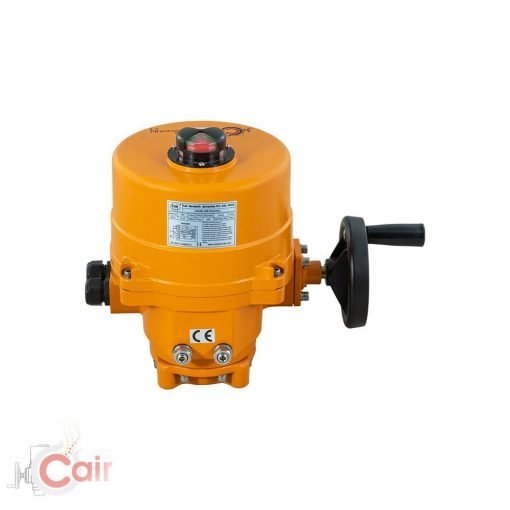
The first step is to determine the type of actuator you need. There are three main types: linear, rotary, and scotch yoke. Linear actuators open and close valves using a linear motion. They produce more torque than rotary actuators and are better suited for larger valves. Rotary actuators open and close valves by rotating them. They produce less torque than linear actuators and are better suited for smaller valves. To open and close valves, Scotch yoke actuators use a reciprocating motion. They typically produce more torque than both linear and rotary actuators and can be used for both large and small valves.
The next step is to determine the size of actuator you need. Actuator size is typically expressed in terms of stroke length (the distance the actuator can move) or torque output (the amount of force the actuator can generate). The stroke length will be determined by the size of the valve you are using; for example, a butterfly valve will require a shorter stroke length than a globe valve. The torque output will be determined by the operating environment; for example, an actuated valve in a high-pressure system will require more torque to overcome the fluid pressure than one in a low-pressure system.
Finally, you need to consider the level of control you need from your actuator. Electric valve actuators can be controlled manually, automatically, or remotely. Manual control means that someone has to physically operate the actuator every time the valve needs to be opened or closed; this is typically only used for small valves or in applications where there is no power available. Automatic control means that an external controller (such as a PLC) is used to operate the actuator; this allows for remote operation and gives you more flexibility in terms of when and how often the valve is opened or closed. Remote control means that you can operate the actuator from any location with an internet connection; this is ideal for applications where you need to monitor or adjust the flow of fluid remotely.
When choosing an electric valve actuator, it is important to consider all of these factors in order to select one that is well suited for your particular application.
conclusion
In conclusion, Electric valve actuators are devices that control the movement of a valve using electromechanical or electrohydraulic means. Electric valve actuators are classified into three types: linear, rotary, and scotch yoke.
Linear actuators open and close valves using a linear motion. They produce more torque than rotary actuators and are better suited for larger valves.
Rotary actuators open and close valves by rotating them. They produce less torque than linear actuators and are better suited for smaller valves.
To open and close valves, Scotch yoke actuators use a reciprocating motion. They typically produce more torque than both linear and rotary actuators and can be used for both large and small valves.
Electric valve actuators are available in a variety of shapes and sizes, each with its own set of benefits and drawbacks. The right one for your application is determined by a variety of factors, including the type and size of the valve used, the operating environment, and the level of control required.
Cair Euromatic Automation is a leading manufacturer and supplier of electric valve actuators in India.We offer a vast range of electrical actuators for rotational and linear motion.
3 notes
·
View notes
Text
Accessories for Kayak Fishing
There are various items to consider if you're going kayak fishing. These kayak fishing gear are not only useful, but they can also help you catch more fish. Rod holders, tackle boxes, and other storage solutions for your equipment can be purchased, according to Aaron Petras. A paddle holder is one of the most crucial of these accessories, as it keeps your rod secure and tidy. Rod holders are crucial kayak fishing gear that you should bring with you on your excursion.
Another wonderful tool to consider is a GPS fish finder. It allows you to fish in deeper waters more effectively. It may be effortlessly coupled with your smartphone or tablet thanks to its transducer and wireless functionality. Waterproof fish finders can be utilized from the shore, ice, or even a float tube. Many of these items are inexpensive, making them an excellent addition to any kayak fishing accessories collection. These fish finders are available from a variety of manufacturers.
Rods, floats, rigs, hooks, and lines are some of the most crucial kayak fishing gear. The sort of water you fish in will influence the fishing equipment you require. A kayak designed for a flat, calm lake or ocean should be large enough to comfortably fit all of your gear and accessories. Also, conforming to Aaron Petras, you'll need a kayak anchor for your fishing trip. It's crucial to measure the dimensions of the water where you'll be paddling so you know you'll be able to anchor your boat.
A landing net is another kayak item that you might wish to explore. A landing net, such as the Frabill folding, telescopic net, helps keep fish safe and dry. They're also useful for holding all of the extra gear you'll need for kayak fishing. If you plan on fishing for large fish, you'll need this gear. If you're on a tight budget, however, a more basic kayak with a lower price tag might be the way to go.
If you're new to kayak fishing, a personal flotation device (PFD) or a vest is a must-have. The majority of PFDs are large, unpleasant, and inconvenient. Fortunately, Astral's Ronny Life Jacket PFD is lightweight and comfortable, and it comes with a number of features. It not only shields your skin from the sun, but it also gives an extra layer of defense to your head and neck.
Pedal drives are available on the market if you don't want to deal with batteries. These motors send power to a pair of fins using rotary pedals. This enables you to paddle further without having to use your arms. You can also cast without paddling with pedal drives. This is a great alternative for those who don't have a lot of time to devote to upkeep. While engines are more convenient, paddles and a paddle are still required.
If you have a sit-on-top kayak, you can plug the scupper holes to keep the water out while fishing. You can buy a scupper valve to help you paddle in warmer weather in addition to closing the scupper holes. If you don't want to be splashed, a scupper plug or scupper valve will keep water out of the cockpit and off the deck.
Another important kayak fishing item is a decent yak cooler. A cooler, unlike a regular kayak cooler, will keep your drinks and sandwiches cold while you fish. Choosing the correct kayak cooler is critical for a pleasant journey. Soggy sandwiches and lukewarm drinks will be served in a "traditional" cooler. Choose an Igloo 25 Qt BMX cooler for a more portable cooler. It's not too big and doesn't take up a lot of room.
If you're new to kayak fishing, a seat and rudder are essential pieces of gear. These kayak fishing equipment can keep you safe and have fun on the water. For added comfort, the seat and floor pads are adjustable and padded. Aaron Petras believes that a solid rudder will aid in steering through tight gaps and provide good forward control. If you don't feel like pedaling, there's always the motor option, which is a nice addition.
A motor is also required. A center-mounted electric motor is common in kayaks with motors. While this is the simplest option, it does limit storage capacity. If you're on a tight budget, however, a kayak without a motor is an option. You may even attach a fish finder, a camera, and other fishing gear to the board's edges. You'll be more productive for longer once you've become used to your kayak fishing gadgets.
2 notes
·
View notes
Text
Global Top 5 Companies Accounted for 73% of total Rotary Limit Switches (RLS) market (QYResearch, 2021)
The rotary limit switch is used to control the movement of industrial machinery. It operates as an auxiliary controller of electrical motors through a power interface, such as a contactor or PLC. Suitable for heavy duty, its shaft is connected to the motor and, after a set number of revolution, the cams operate the switches, thus starting the predetermined movement. A worm gear and a helical toothed gear combined with one or more pairs of straight toothed gears are used for the transmission of the movement from the input shaft to the output shaft.
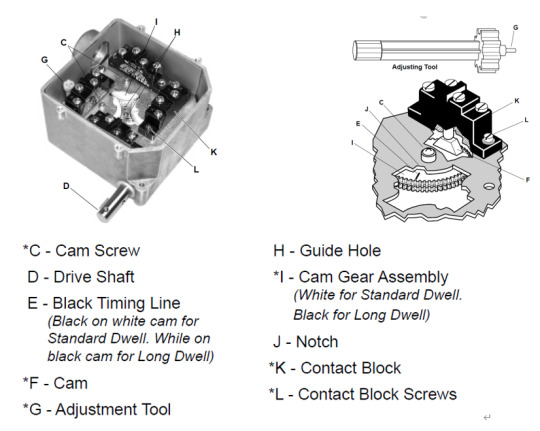
According to the new market research report “Global Rotary Limit Switches (RLS) Market Report 2023-2029”, published by QYResearch, the global Rotary Limit Switches (RLS) market size is projected to reach USD 0.07 billion by 2029, at a CAGR of 3.0% during the forecast period.
Figure. Global Rotary Limit Switches (RLS) Market Size (US$ Million), 2018-2029

Figure. Global Rotary Limit Switches (RLS) Top 5 Players Ranking and Market Share(Based on data of 2021, Continually updated)

The global key manufacturers of Rotary Limit Switches (RLS) include Stromag, Tecno Elettrica Ravasi (TER), AMETEK STC, Gleason Reel (Hubbell), Giovenzana, B-Command, BeiLiang, Micronor (Photon Control), etc. In 2021, the global top five players had a share approximately 73.0% in terms of revenue.
About QYResearch
QYResearch founded in California, USA in 2007.It is a leading global market research and consulting company. With over 16 years’ experience and professional research team in various cities over the world QY Research focuses on management consulting, database and seminar services, IPO consulting, industry chain research and customized research to help our clients in providing non-linear revenue model and make them successful. We are globally recognized for our expansive portfolio of services, good corporate citizenship, and our strong commitment to sustainability. Up to now, we have cooperated with more than 60,000 clients across five continents. Let’s work closely with you and build a bold and better future.
QYResearch is a world-renowned large-scale consulting company. The industry covers various high-tech industry chain market segments, spanning the semiconductor industry chain (semiconductor equipment and parts, semiconductor materials, ICs, Foundry, packaging and testing, discrete devices, sensors, optoelectronic devices), photovoltaic industry chain (equipment, cells, modules, auxiliary material brackets, inverters, power station terminals), new energy automobile industry chain (batteries and materials, auto parts, batteries, motors, electronic control, automotive semiconductors, etc.), communication industry chain (communication system equipment, terminal equipment, electronic components, RF front-end, optical modules, 4G/5G/6G, broadband, IoT, digital economy, AI), advanced materials industry Chain (metal materials, polymer materials, ceramic materials, nano materials, etc.), machinery manufacturing industry chain (CNC machine tools, construction machinery, electrical machinery, 3C automation, industrial robots, lasers, industrial control, drones), food, beverages and pharmaceuticals, medical equipment, agriculture, etc.
For more information, please contact the following e-mail address:
Email: [email protected]
Website: https://www.qyresearch.com
0 notes
Text
The Ultimate Guide to Air Compressors: Types, Uses, and Maintenance
Air compressors are versatile tools that are used across various industries and for personal applications. Whether you’re a seasoned professional or a DIY enthusiast, understanding air compressors can greatly enhance your projects. In this comprehensive guide, we’ll delve into everything you need to know about air compressors, including their types, uses, and maintenance tips.
What is an Air Compressor?
An air compressor is a device that converts power (usually from an electric motor, diesel engine, or gasoline engine) into potential energy stored in pressurized air. This compressed air can then be used for a wide range of applications, from inflating tires to powering pneumatic tools.
Types of Air Compressors
1. Reciprocating (Piston) Compressors: These compressors use pistons driven by a crankshaft to deliver air at high pressure. They are commonly used for light industrial applications and in workshops.
2. Rotary Screw Compressors: Ideal for continuous use, rotary screw compressors use two meshing helical screws to compress the air. They are efficient and relatively quiet, making them popular for industrial settings.
3. Centrifugal Compressors: Typically used in large industrial applications, centrifugal compressors utilize a rotating impeller to accelerate air, which is then converted into pressure energy.
4. Scroll Compressors: These compressors use two interleaving scrolls to compress air. They are compact, quiet, and often used in smaller applications like air conditioning and refrigeration.
Common Uses of Air Compressors
- Powering Pneumatic Tools: Air compressors are widely used to power tools such as nail guns, impact wrenches, and sandblasters.
- Inflating Tires and Sporting Equipment: Air compressors make quick work of inflating tires, sports balls, air mattresses, and pool toys.
- Spray Painting: Spray guns used for painting often require compressed air to atomize paint and deliver a smooth finish.
- Industrial Applications: Air compressors are vital in manufacturing processes, including powering automation systems and controlling air flow.
Air Compressor Maintenance Tips
To keep your air compressor running smoothly and efficiently, follow these maintenance guidelines:
1. Regularly Check and Change Filters: Clean or replace intake filters to prevent dust and debris from entering the compressor.
2. Monitor Oil Levels: For oil-lubricated compressors, check oil levels regularly and change the oil as recommended by the manufacturer.
3. Inspect Belts and Hoses: Ensure belts are properly tensioned and hoses are free from leaks or damage.
4. Drain Moisture: Condensation can build up in the compressor tank; drain this moisture regularly to prevent corrosion.
5. Keep It Clean: Regularly clean the compressor and its surroundings to prevent dirt and debris from affecting performance.
Choosing the Right Air Compressor
When selecting an air compressor, consider factors such as required pressure (PSI), air volume (CFM), power source (electric, gasoline, diesel), and intended use. Consult manufacturer guidelines and product specifications to ensure compatibility with your applications.
In Conclusion
Air compressors are indispensable tools with a wide range of applications. By understanding the different types, uses, and maintenance practices associated with air compressors, you can maximize their efficiency and longevity for all your projects, whether at home, in the workshop, or on the job site.
0 notes